How to land a job with a big studio: 9 pro tips
This article is brought to you in association with Masters of CG, a new competition that offers the chance to work with one of 2000AD's most iconic characters. There are big prizes to be won, so enter today!
If you think working as a 3D artist on big Hollywood movies seems like a pipe dream, then think again. "There's more demand than ever for young 3D talent, because the industry is expanding so rapidly," enthuses Double Negative's Pete Bebb, the award-winning VFX supervisor on Inception, The Dark Knight Rises (above) and Thor: The Dark World.
"Double Negative has gone from 30 to over 1000 in two countries, and that sort of growth has applied across the board to a lot of other facilities. So it's definitely a growing industry - and we need to get a lot more people entering it if we can."
Recruitment drive
William Sargent, CEO of Framestore, the studio behind Gravity, brings a similar perspective. "In this past 12 months we've ended up employing 660 people," he told us back in March. And nor do you need to know a secret handshake to work at Framestore. "Every single one of the 660 has been managed through the website application process - without exception," he confirms. "It's a pretty open system."
So the opportunities are there. But once you've done the course and got the skills, how do you make the most of them? We canvas some of the world's leading 3D professionals to find out their tips in scoring that dream job...
01. Emphasise your creative background
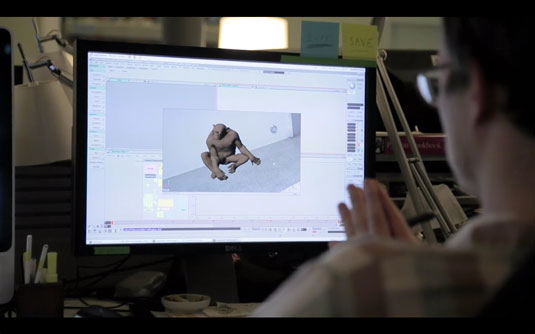
When the leading lights of the industry recruit, they're not just looking for mad technical skills - they want to see evidence of your creativity. So when you write your cover letter or have your interview, emphasise whatever creative background you have - even if it's not directly relevant to the job in hand.
“There are many different ways of getting into the VFX industry," stresses Angus Kneale, executive creative director of The Mill in New York. "One way would be having a film school background. But we also have quite a few people that come to VFX from a design angle." When it comes to animation, "a really strong foundation of traditional art helps in the design of poses, in the staging of shots, and so on," adds Andrew Gordon, directing animator at Pixar.
Daily design news, reviews, how-tos and more, as picked by the editors.
So whatever your creative background, bring it to the fore and explain to your prospective employers how it will benefit them. But a word of caution comes from Ben Owen, Global Head of Recruitment at MPC. "You should aim your CV to lead into an interview," he says. "So you don't want to give too much away or you won't have much left to talk about in the interview."
02. Exploit your network
As we mentioned earlier, you don't need a secret handshake to get employed at Framestore - absolutely anyone can apply. But that doesn't mean you shouldn't take advantage of people you know in the industry, says CEO William Sargant. "There's nothing wrong with people coming with an introduction - friends introducing friends - because in the end you're going to get evaluated by two or three people" he says.
In other words, any contacts you have won't win you a job by itself - but they could help get your foot in the door. "There's absolutely nothing wrong with using contacts to get yourself an interview or for someone to pick out your CV from the middle of the pile," says Sargant. "That just shows initiative."
03. Pay your dues
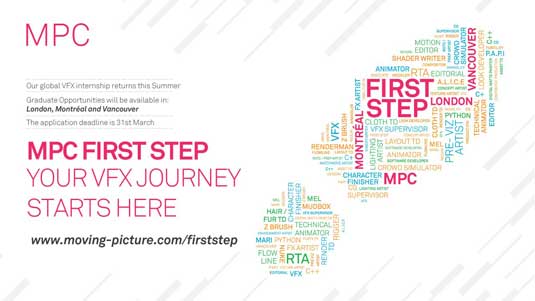
When applying for a job, you need to excude confidence. But take care not to let that spill over into arrogance - or it may cost you dearly.
"I'm not a massive supporter of students coming in with fancy qualifications and just thinking that they're going to walk into a live project and earn copious amounts of money," says Double Negative's Pete Bebb. "As with everywhere in the film industry, camera department and all the rest of it, there's a very strict hierarchy and a process which you have to adhere to get to the top." A bit of humility and respect, in other words, can go a long way.
Pixar's Andrew Gordon sounds a similar warning. "I’ve led the internship here at Pixar about three times and some of the danger of the interns coming in is that Pixar is a very cushy job," he cautions. "It's got a nice gym, great education and they make it very comfortable. But sometimes it gets a bit too comfortable for these new guys and I think there’s a danger in that."
Instead, he recommends, "really sink yourself into your work and just be dedicated to it and focus on an aspect of it that you like. Really go deep in your understanding of your profession."
04. Become a runner
Internships, of course, are scarce and the struggle to get a place on one can be fiercely competitive. But there are other routes to a job with a big studio - and becoming a runner is a traditional, and still popular way to get your foot in the door.
"A lot of the people that are running the creative parts of the company started as runners," stresses Angus Kneale. "There is a strong tradition at The Mill for promoting from within and a strong culture of training. People rise up through the ranks learning the way we do things. Culture plays a huge part in our every day.”
Another big name in VFX, the CEO and executive producer of Milk Will Cohen, started his career in exactly that way, and he's enthusiastic about hiring runners at his own company today.
“Today there’s so many amazing courses, so many talented people, government Skillset schemes and so on, that you can absorb them into your company pretty quickly," he says.
For his company, it's certainly not just a year spent making tea. "The lifespan of a runner in a small creative studio like Milk is not long, before they get absorbed into the team - doing tracking, compositing, all the junior level work," he explains. "We don’t have a lot of client attends so being a runner at our place is a great experience. You spend most of your day working on kit and training."
05. Be realistic
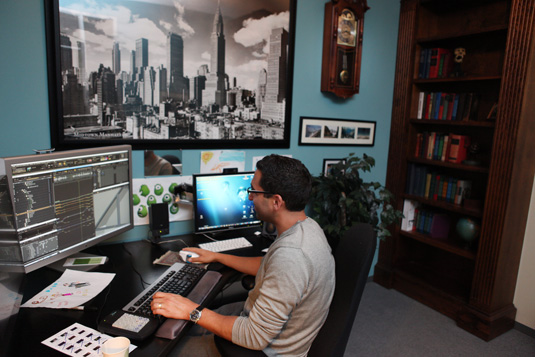
There's strong demand for 3D skills right now, so it's good to aim high. But don't go to extremes and turn down an opportunity just because it isn't your dream job, adds Pixar's Andrew Gordon.
"Definitely don’t have blinders on of ‘I just want to work at Pixar’ or ‘I just want to work here’," he advises. "Basically get as much experience as you can, anywhere you can and do the best possible job you can. Ultimately you have to do the not-so-great jobs in order to get to the one you want."
06. Generalist or specialist?
For a while now, increasingly short timeframes and shrinking budgets have led to a trend in specialisation within the larger (in terms of headcount) VFX studios. But while there's a demand for specialists at companies like MPC, Double Negative and Framestore, there are still lots of boutique studios crying out for generalists.
These are firms that are 'big' in stature but not in terms of personnel - such as Celluloid, the German outfit behind the VFX on Underworld: Rise of the Lycans and Underworld: Awakening. "Because we are a small team we are looking for high skilled people and particularly generalists," explains co-founder Michael Landgrebe.
"Generalist is often used as a bad term - people say a generalist is someone who knows everything but nothing really. But we use this term in a different way: people who also have comp experience, people with a bigger overview of things. In my view the generalist is a really cool thing if he has a good good background knowledge."
07. Craft a killer showreel
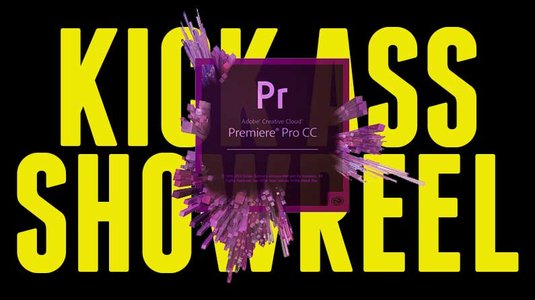
As the saying goes, show don't tell. You can get a ton of advice on creating a killer showreel in this article. But the main tip absolutely everyone will tell you is: keep it short.
"Because we have to look at so many reels, we would recommend for them to be roughly one-and-a-half to two minutes in length," says Claire Anderson of The Mill. "We don’t even always get all the way through, so I’d also say to put your best work at the beginning."
MPC's Ben Owen is singing from the same hymn sheet. "A minute or two really is the maximum," he says. "But it's not about length per se, but about carefully selecting the best work you have. Even 15-20 seconds of high quality work is better than a whole load of stuff I can't work with."
08. Be a team player
In the collaborative and often pressured world of 3D, being able to get on with people and play as part of a team is as important as how good you are at using Maya. Or as Angus Kneale of The Mill puts it: "Communication skills are as important as skills and talent. At The Mill, we look for people that have a combination of artistic, technical and social skills. The best people we have are a blend of all three."
Michael Landgrebe of Celluloid concurs. "The personal factor is really important," he says. "We work in an open plan office, so it’s really a matter of chemistry. If someone comes in for interview, it’s very important they can get on with the other people - that they are likeable, basically."
09. Pay attention to detail
When you work for a big studio, if a single pixel is out of place, the audience is going to notice. So it stands to reason that a single detail out of place in your job application is going to send it straight to the rejects pile.
Here are Pixar's top tips for getting your application spot-on:
- Tailor your CV accordingly – the company you're applying for only wants to see information relevant to what they do
- Keep your CV to one page (especially students)
- Make sure your cover letter is addressed to the right place
- Don’t send in boring template cover letters. Tell them what excites and inspires you about the company. Put in something that they will remember and that reflects your personality
- Don’t show unapproved work
- Put your best work first and provide breakdowns.
- Show the reel to others first and get feedback on what can be improved
Win a trip to SIGGRAPH!
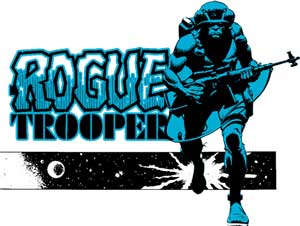
Masters of CG is a competition for EU residents that offers the one-in-a-lifetime chance to work with one of 2000AD's most iconic characters: Rogue Trooper.
We invite you to form a team (of up to four participants) and tackle as many of our four categories as you wish - Title Sequence, Main Shots, Film Poster or Idents. For full details of how to enter and to get your Competition Information Pack, head to the Masters of CG website now.
Enter the competition today!

Tom May is an award-winning journalist specialising in art, design, photography and technology. His latest book, The 50 Greatest Designers (Arcturus Publishing), was published this June. He's also author of Great TED Talks: Creativity (Pavilion Books). Tom was previously editor of Professional Photography magazine, associate editor at Creative Bloq, and deputy editor at net magazine.
